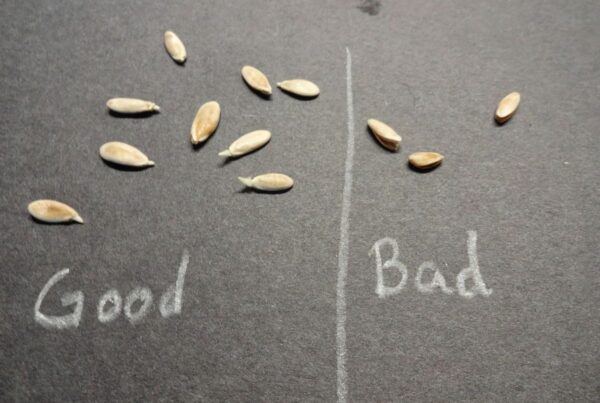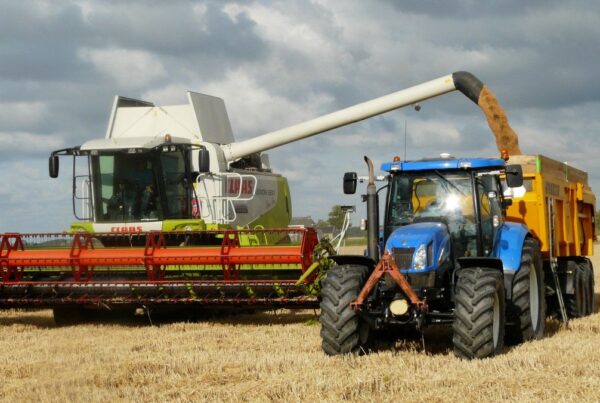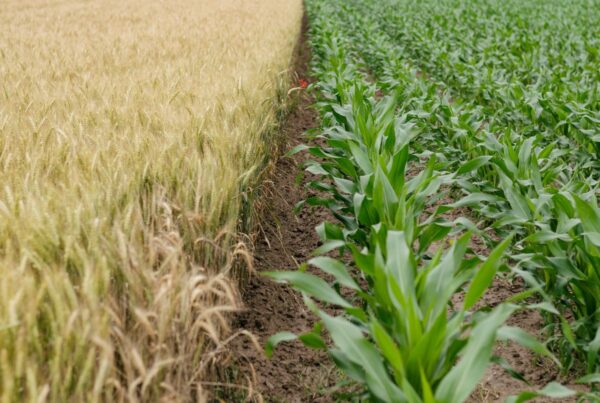The journey from seed to harvest is a complex and fascinating process, particularly in the growth of cannabis. This article delves into the various stages of the cannabis life cycle, offering insights into the critical timings and methods that ensure a successful cultivation. From the initial germination of the tiny seed to the intricate care required during flowering and harvesting, we explore the essential steps every grower must navigate to produce the most potent and flavorful buds.
Key Takeaways
- The cannabis life cycle is divided into distinct stages: germination, vegetative growth, flowering, and harvest, each requiring specific care.
- Observing trichome and pistil changes is critical for determining the optimal harvest time to maximize potency and flavor.
- The flowering stage varies by strain, with indica-dominant strains flowering quicker than sativa-dominant strains.
- Transplanting seedlings at the right time and hardening them off properly is essential for acclimatizing them to outdoor conditions.
- Understanding the nuances of each growth stage and adhering to precise timings can significantly influence the quality and yield of the harvest.
From Tiny Seed to Mighty Weed: The Cannabis Growth Odyssey

Germinating Cannabis Seeds: The Birth of a Bud
Alright, folks, let’s talk about the magic of germinating those tiny green promises. Germination is where it all begins, and trust me, it’s more exciting than watching paint dry. You’ve got your seeds, and you’re itching to see them sprout. Well, here’s the lowdown on getting those babies to burst with life.
First off, you need the right setup. Moisture, warmth, and a little bit of love (okay, maybe not the love part, but it doesn’t hurt). You can go old school with the damp paper towel method, or get fancy with a germination station. Either way, you’re waiting for that tiny taproot to say ‘hello’.
Now, I’ve seen all sorts of questions online, like ‘How do I germinate marijuana seeds?’ Well, here’s a pro tip: soaking your seeds overnight in slightly warm water can work wonders. It’s like a mini spa for your seeds, and who doesn’t love a good soak?
Once those seeds crack open, it’s game on. You’ll see the seedlings emerge, sporting their first true leaves like a badge of honor. But remember, they’re still babies. They need gentle light, a cozy humidity blanket, and just a whisper of nutrients. Treat ’em right, and they’ll grow up to make you proud.
Keep a close eye on your seedlings, folks. They’re the future of your grow, and they deserve all the attention you can give ’em.
Vegetative Growth: The Teenage Plant Years
Alright, folks, let’s talk about the vegetative stage, or as I like to call it, the ‘teenage years’ of our green gals. This is when they’re all about that growth spurt life, stretching out their limbs and soaking up the sun (or those fancy LED lights). It’s a crucial time where they’re packing on the foliage and getting strong – think of it as plant puberty, minus the awkward school dances.
During this phase, your plants are gonna need the right mix of nutrients and plenty of hydration. But don’t go drowning them – keep the soil moist, not soggy. Here’s a quick rundown of what these teenage plants are craving:
- Nitrogen: For lush, green growth
- Phosphorus: For those all-important roots
- Potassium: For overall health and vigor
Remember, it’s all about balance. Too much love (or fertilizer) and you’ll end up with the botanical version of a moody teenager.
Keep a close eye on your plants during this stage. They’re growing like weeds (pun intended), and this is when you’ll start to see their true potential. It’s also the time to start thinking about training techniques if you’re looking to maximize yield and keep your canopy even.
And hey, if you’re ever in doubt, just give us a holler. We’ve been doing this dance for over two decades, and we’ve got the moves to prove it!
Flowering: When Your Plant Starts to Show Off
Alright folks, let’s talk about the show-stopping phase of our green beauties: the flowering stage. This is when your plant starts strutting its stuff, and you’ll be grinning ear to ear watching those buds swell up. Remember, the real magic happens in the mid flower stage, where the buds pack on the most weight and get all frosty with trichomes. It’s like the plant’s putting on its Sunday best for the big harvest dance!
Now, don’t get too distracted by the pretty flowers, because timing is everything. You’ve got to keep a sharp eye on those buds, as they’ll stop growing vertically and making new leaves about 20 days after flowering kicks off. Here’s a quick rundown of what to expect:
- Transition to flowering: Your plant shifts gears and starts focusing on bud production.
- Mid flower stage: Buds grow the most, and you’ll see that sticky icky start to form.
- Late flower stage: Buds are getting dense, and those smells? Heavenly.
Patience is key here. Don’t rush to harvest just because you’re excited. The best things in life, and especially in growing, come to those who wait.
Keep in mind, the flowering stage can vary depending on the strain and your growing conditions. But hey, after 20+ years of growing in Oklahoma, I’ve learned that each plant has its own personality. So, treat ’em right, and they’ll treat you to some top-shelf nugs.
Harvest Time: The Moment of Truth
Alright folks, we’ve nurtured our green beauties with tender love and care, and now it’s crunch time – harvest time. This ain’t my first rodeo, and let me tell ya, timing is everything. You jump the gun, and you’re leaving potency and flavor on the table. Wait too long, and your hard work goes up in smoke, literally.
Here’s the skinny on when to harvest:
- Keep a hawk-eye on those trichomes. When they shift from clear to a milky or amber hue, it’s go-time.
- Indica or sativa? Remember, your indica pals wrap up quicker, in about 7-9 weeks. Sativas, on the other hand, like to take their sweet time, anywhere from 9-14 weeks.
Don’t get caught with your plants down when the frost hits. Make sure your babies are all tucked in before the cold snap.
And here’s a pro tip: get yourself a magnifying tool or a microscope. It’s like having a crystal ball that tells you exactly when to harvest for that primo quality. Trust me, after 20 years in the biz, I’ve learned that the devil’s in the details.
The Secret Life of Plants: Timing Your Harvest with Precision

Trichome Watch: The Crystal Ball of Harvest Timing
Alright folks, let’s talk about the magic of trichomes, those tiny crystal-like structures that are more telling than a fortune teller at a county fair. When those little babies go from clear to cloudy, it’s like they’re giving you a high-five, signaling that it’s almost time to break out the scissors and get to work. But don’t jump the gun! Timing is everything.
- Clear Trichomes: Too early, the force is not strong with this one yet.
- Milky Trichomes: Now we’re talking, peak THC levels are in sight.
- Amber Trichomes: Easy tiger, you’re in the CBD zone, and the THC is waving goodbye.
Remember, the longer you wait, the more the THC degrades and the higher the CBD levels get. It’s a dance of cannabinoids, and you’re the DJ.
Now, I’ve been doing this dance for over two decades, and I’ve seen growers get antsy, chopping down their green beauties too soon. Patience, my friends. Use a jeweler’s loupe or a microscope to get up close and personal with your trichomes. It’s a bit like playing detective, but instead of solving crimes, you’re unlocking the full potential of your plants. And trust me, your customers will thank you for it.
Pistil Party: Color Changes and What They Mean
Alright folks, gather ’round for a little pistil party! Now, if you’ve been tending to your green gals as lovingly as I have, you’ll notice a little color show as they mature. The pistils, those tiny hair-like strands, start to strut their stuff, transitioning from a youthful white to a more sophisticated palette of orange, brown, or red. This ain’t just for show – it’s nature’s way of saying, ‘Hey, I’m almost ready for the big leagues!’
But don’t just take my word for it, let’s break it down:
- White: Your plant’s still in the early days of flowering. Think of it as the ‘just got its braces off’ phase.
- Orange/Brown: Now we’re getting somewhere! This is the ‘I can legally rent a car’ stage of plant maturity.
- Red: Whoa there, we’ve got a full-blown adult on our hands. This color means your plant is at peak ripeness, like a fine wine that’s ready to be uncorked.
Remember, the color of the pistils is like a secret handshake between you and your plant. It’s a silent but colorful conversation about when it’s time to transition to harvest.
So keep a keen eye on those little party-goers. When about 70-80% of the pistils have changed color, it’s a good sign that harvest time is nigh. But don’t rush it – timing is everything if you want that top-shelf quality. And after all, good things come to those who wait, right?
The Great Snip: Harvesting Your Cannabis with Care
Alright, folks, let’s talk about the moment we’ve all been waiting for: The Great Snip. Now, I’ve been at this game for a good while, and if there’s one thing I’ve learned, it’s that timing is everything when it comes to harvesting your green beauties. You want to catch ’em just when they’re at their peak, bursting with all those delightful compounds that make your efforts worthwhile.
Patience is a virtue, my friends, but so is vigilance. Keep a keen eye on those trichomes; they’re your best bet for nailing the perfect harvest time.
Here’s a quick rundown of what to look for:
- Clear Trichomes: Hold your horses! These babies aren’t ready yet.
- Milky Trichomes: Now we’re talking. This is the sweet spot for maximum potency.
- Amber Trichomes: If you like a more mellow buzz, this is your cue.
Remember, after the snip comes the art of drying and curing. Do it right, and you’ll be the toast of the town. Do it wrong, and well, let’s just say you’ll learn a lot about humility. And hey, if you’re new to this whole cultivation rodeo and eager to smoke what you planted, don’t fret. We’ve all been there, and there’s no shame in learning as you go.
Post-Harvest Shenanigans: Curing, Drying, and Beyond

Drying: The Art of Patience
Alright folks, let’s talk about the drying game. It’s like watching paint dry, but trust me, it’s way more rewarding. The key here is low and slow. You’ve got to treat your buds like a fine brisket in a smoker. Start by hang drying—cutting off big branches or even hanging whole plants upside down on your rack or line. Make sure the amount of light can be easily limited, because you don’t want those precious trichomes getting zapped by too much sun.
Here’s a quick rundown of the conditions you’ll want to nail down:
- Temperature: Keep it cool, around 60-70 degrees Fahrenheit.
- Humidity: Aim for 45-55% to avoid mold and over-drying.
- Airflow: Gentle circulation is your friend. No hurricanes in the drying room, please.
Remember, patience is not about the ability to wait, but the ability to keep a good attitude while waiting.
Once you’ve got the environment dialed in, give it time. We’re talking 7-14 days, depending on the conditions and the size of your harvest. Keep an eye on those stems; when they snap instead of bend, you’re in the ballpark. And don’t rush it! Rushing drying is like asking for a flat soda—nobody wants that.
Curing: Flavor’s Best Friend
Alright folks, let’s talk about the magic of curing. After you’ve done the hard work of growing and harvesting your green beauties, curing is where you seal the deal. Curing is all about patience and precision, and trust me, it’s worth the wait. It’s like aging a fine wine or letting a steak rest; it brings out the best in your buds.
Here’s a quick rundown of the steps:
- Dry those buds just right, not too fast, not too slow.
- Jar them up in airtight containers; think of it as tucking them in for a long nap.
- Burp the jars daily to let them breathe and prevent mold.
- Wait it out for a few weeks to a few months, depending on how you like your smoke.
Remember, curing isn’t a race. It’s a slow dance with time and your plants. The longer you cure, the smoother and more flavorful the experience.
Curing can take several weeks to several months, depending on personal preference and desired quality. It’s not just about waiting; it’s about transforming those buds into a top-shelf product that’ll make your customers come back for more. So, take your time, and let those flavors develop. Your future self (and your customers) will thank you!
Storing Your Stash: Keeping It Fresh
Alright, folks, let’s talk about keeping that green goodness as fresh as the day you plucked it. After all, you didn’t put in all that sweat and love just to let your buds go stale, right? Storing your stash properly is crucial to maintaining that top-shelf quality.
First off, you’ll want to keep your cannabis in a cool, dark place. Think of it like a fine wine that doesn’t appreciate the sunbathing. And humidity? Keep it around 59-63% to avoid mold and drying out. Here’s a quick rundown:
- Temperature: Keep it cool, but not cold. No fridges or freezers, please.
- Light: Darkness is your friend. Light degrades THC over time.
- Humidity: 59-63% is the sweet spot. Consider humidity packs.
- Air: Oxygen is a no-go. Vacuum-seal or use airtight containers.
Remember, the key to longevity is an environment that doesn’t stress your buds. Think of it as a spa for your stash.
And don’t get me started on those plastic baggies. They’re fine for a quick fix, but for long-term storage? Get yourself some glass jars or vacuum-sealed containers. Trust me, your future self will thank you when you’re lighting up some perfectly preserved green months from now. Happy storing!
Plant Parenthood: Transplanting and Caring for Your Cannabis Kids

The Big Move: When to Transplant Your Seedlings
Alright, green thumbs and budding botanists, let’s talk about the big league move from cozy pot to the great outdoors. Transplanting your cannabis kids is like sending them off to college
- they gotta be ready to face the world! Now, don’t go plucking your babies out of their cribs too early. You want to wait until they’ve got a solid root system, but not so long that they’re spilling out of their pots like a teenager’s jeans.
Here’s the skinny on timing:
- Start with seeds indoors, and keep an eye on those roots.
- When they’re filling up their space and chugging water like it’s going out of style, it’s time to think about the big move.
- If you’re playing it safe indoors because Jack Frost is still lurking, transplant to a bigger pot and start the hardening off process about a week before the last frost date.
Remember, it’s not just about when, but how you transplant. Harden those babies off by giving them a taste of the outside in their current pots, then when it’s time, be gentle. Loosen up those roots and tuck them into their new earthy beds with care. Water them well, and voila, you’re on your way to a bountiful harvest.
And hey, if you’re feeling adventurous and want to align your grow with the cosmos, check out that lunar planting schedule. But that’s a story for another night under the stars.
Hardening Off: Prepping for the Great Outdoors
Alright, folks, let’s talk about getting those tender green babies of ours ready for the big, bad world outside. Hardening off is like the boot camp for plants, and it’s crucial if you want them to stand tall and not wilt like a cowboy’s hat in a rainstorm. Start by introducing your plants to the outdoors gradually; think of it as dipping your toes in the pool before diving in.
Here’s the lowdown on how to do it right:
- Begin on a day that’s as calm as a pond with no ducks – a still, cloudy day is perfect.
- Give your plants a good drink before they step outside; they gotta stay hydrated, just like us.
- Set them up in a sheltered spot, away from those rowdy winds and scorching sun.
Remember, it’s all about baby steps. Don’t rush your plants into a full day of sunbathing right away. Increase their outdoor time gradually over a week or so.
Now, I’ve seen my fair share of plants go from sprout to stout, and let me tell you, skipping this step is like sending a kindergartner to high school. So, take your time, follow these steps, and your plants will thank you by growing up strong and yielding some top-notch buds.
Transplant Tips: Ensuring a Smooth Transition
Alright, folks, let’s talk about giving your green babies a new home without causing a plant tantrum. First off, timing is everything. You don’t want to rush your seedlings into the big, scary world without a little prep. Here’s the lowdown:
- Make sure your seedlings are big enough to fend for themselves, but not so big they’re busting out of their pots like the Hulk.
- Keep an eye on the roots. If they’re doing a jailbreak from the cell, it’s time for a move.
- Hardening off is like pre-gaming for plants. Give ’em a taste of the outdoors so they don’t go into shock when they hit the real deal.
Now, when it’s go-time, be gentle. Think of it as a plant spa day. Loosen those roots, tuck ’em into their new earthy bed, and water them like you’re toasting to their future success.
Remember, a happy transplant means a happy plant, and a happy plant means a happy you. Keep the soil moist, not soggy, and protect your youngsters from those pesky diseases. With a bit of love and care, you’ll be on your way to a bountiful harvest. And hey, if you need more tips, just swing by the shop. We’ve been doing this for over 20 years, and we’ve got stories that’ll make your leaves curl—in a good way!
Gardening by the Moonlight: Aligning Your Grow with Lunar Lore

What is Planting by the Moon?
Alright, folks, let’s talk about planting by the moonlight. Sounds mystical, doesn’t it? Well, it’s not just for the hippies and the horoscope crowd. Planting by the moon, or as some like to call it, ‘Gardening by the Moon’, is an age-old tradition that’s about syncing your planting schedule with the lunar cycle. The idea is that the moon’s gravitational pull affects moisture in the soil, which can help seeds sprout and grow more robust plants.
Here’s the lowdown on how it’s supposed to work:
- Plant your above-ground crops when the moon is waxing, that is, growing from new to full.
- For the root crops, wait until the moon is waning, shrinking from full back to new.
Old-timers will tell you that following the moon’s phases will give you the biggest and tastiest harvest you could dream of. And hey, if it’s been working for centuries, there might just be something to it, right?
Now, I’m not saying you should toss out all your modern farming knowledge and go full moonchild on me. But, why not give it a whirl? Could be the secret sauce you’ve been missing.
Remember, this isn’t an exact science, and every plant’s got its own vibe. But if you’re curious, why not try planting a few seeds by the moon’s glow and see what happens? Worst case, you’ll have a good story to tell.
Lunar Phases and Planting Dates: Is There a Connection?
Alright folks, let’s talk about the Moon and your green babies. You’ve probably heard some old-timers talk about planting by the Moon’s phase. It’s like fishing tales but for farming. The basic idea? The Moon’s gravitational pull isn’t just for tides; it’s supposed to give your plants a leg-up too.
Now, I’m not saying you should toss your Farmer’s Almanac and start planting by the stars, but there’s no harm in a little cosmic curiosity, right? Here’s the lowdown:
- Plant your above-ground crop seeds when the Moon is waxing. That’s from new to full, for those of you who don’t speak ‘lunar’.
- For the root veggies and bulbs, you want to wait until the Moon is waning. That’s from full back to new.
I’ve been at this game for a long time, and I’ve seen growers swear by this method. They claim they get bigger buds and tastier treats out of their gardens. So, if you’re feeling adventurous, why not give it a whirl? Just remember, your plants still need the TLC they always do—moonlight or not.
Remember, the Moon’s just one part of the puzzle. Good soil, water, and love are what really make your garden grow.
Moonlit Myths: Separating Fact from Folklore
Alright, folks, let’s get down to the nitty-gritty of moonlit myths. You’ve probably heard some old-timers talk about planting by the moon’s phases to get the best crops. It’s a tale as old as time, or at least as old as Pliny the Elder, and some swear by it like it’s the gospel of farming. But let’s be real, we’re in the 21st century, and while I respect the traditions, I’m all about what works consistently.
Now, I’m not saying there’s no truth to it. Heck, the idea that the moon governs moisture is pretty interesting, and I’ve seen some of my fellow farmers follow the moon calendar with almost religious fervor. But in my two decades of growing the green, I’ve learned that good ol’ science and a bit of common sense go a long way.
Here’s the deal: I’ve tried it all, from talking to my plants to playing them classical music. And while I can’t say for sure if the moon’s waxing and waning has made a lick of difference, I can tell you that proper care, nutrients, and love are what really make my plants thrive.
So, before you start aligning your planting schedule with the lunar calendar, consider this simple list of what truly matters in growing top-notch cannabis:
- Quality seeds (no compromise here!)
- Consistent watering (but don’t drown ’em)
- The right nutrients (they’re picky eaters)
- Plenty of light (sunshine or the artificial kind)
- Love and attention (talk to them, they listen)
Remember, at the end of the day, it’s about what works for you and your plants. If moon planting tickles your fancy and you believe it gives you an edge, by all means, go for it. But don’t forget the basics that have stood the test of time and science.
Conclusion: The Comedic Cultivation Chronicle
Well, folks, we’ve journeyed from the tiny twinkle of a germinating seed to the triumphant tapestry of a fully-fledged harvest. It’s been a wild ride, with more stages than a Shakespearean drama and more anticipation than a season finale cliffhanger. Whether you’re a green-thumbed guru or a budding novice, remember that timing is everything—like comedy and pizza delivery. So, keep your eyes peeled on those trichomes, and don’t let your harvest be the butt of a late bloomer joke. Until next time, may your plants be as bountiful as your laughter!
Frequently Asked Questions
How long does the germination stage of cannabis last?
The germination stage typically lasts 6 to 8 days, during which a green sprout appears above the soil.
What are the key signs of the vegetative growth stage in cannabis?
During vegetative growth, which lasts about 20 to 25 days, vines lengthen, foliage and roots grow, and flowers start to emerge.
When is the ideal time to harvest cannabis?
The ideal time to harvest cannabis is when the trichomes on the buds change color from clear to milky or amber, as observed with a magnifying tool or microscope.
What should I look for during the flowering stage to time my harvest?
During the flowering stage, monitor trichome development and observe pistil color changes to determine the optimal harvest time.
When should I transplant my cannabis seedlings?
Transplant cannabis seedlings when they have outgrown their seed trays or starter pots. If outdoor conditions are not yet suitable, transplant to larger pots indoors before moving them outside.
What is ‘planting by the moon’ and does it affect cannabis growth?
Planting by the moon is an agricultural practice that aligns planting dates with lunar phases. While some gardeners swear by its effectiveness, scientific evidence for its impact on cannabis growth is limited.








